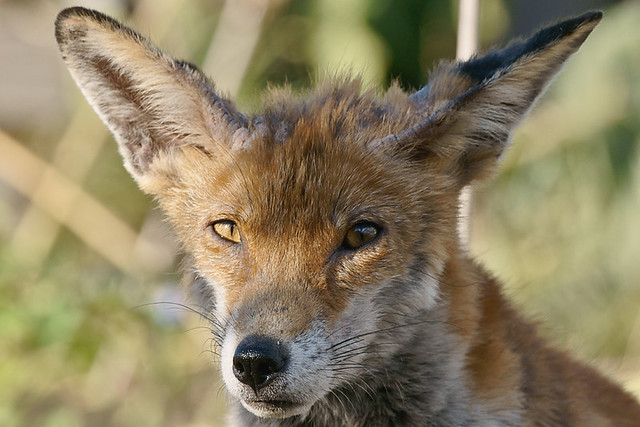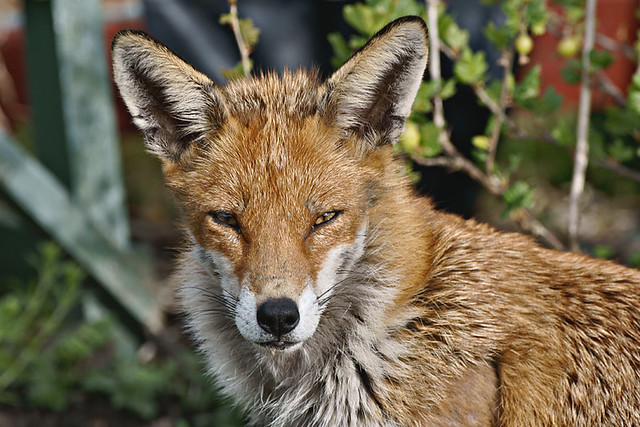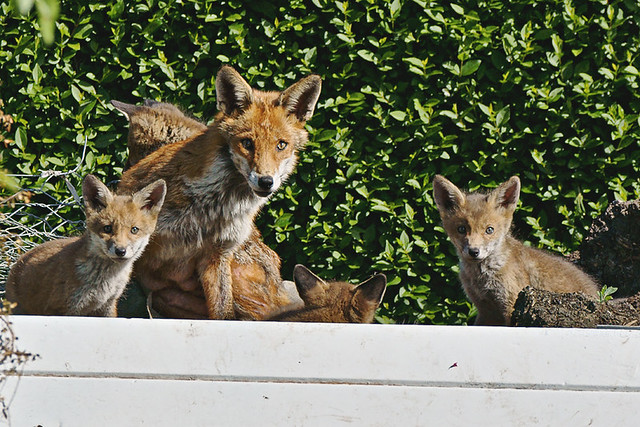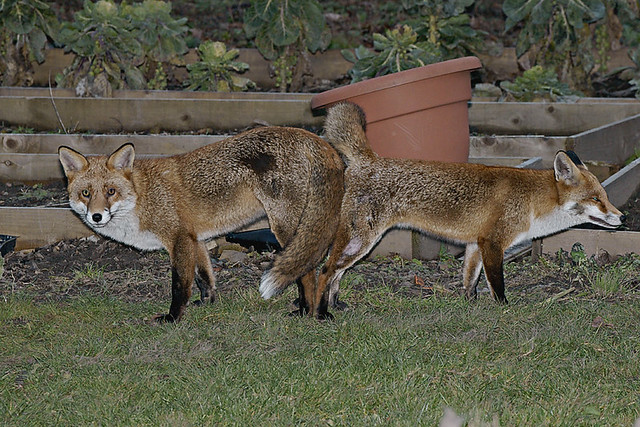The sight of a
fox in the car headlights, dashing across the road near the road to Favier the other evening, brought back memories of past encounters with foxes. As we were city folks, most of these encounters have been with urban foxes, because this resourceful and adaptable species (
renard) [
vulpes vulpes] has found city life very much to its liking.
The first fox I remember was in the village of Lapworth, near Birmingham, where a young fox was being kept in a not particularly large cage. I recall it had been brought up from a cub by the publican's family, but was too wild to run free. I was only a kid myself then, and no doubt such treatment would be illegal now.
As I grew up in Birmingham, there were sounds at night that I recognised as the barking of foxes, and I saw one from my parents' bedroom window, fast asleep in the sun on the neighbours' coalshed roof. Presumably it thought it couldn't be seen there, and indeed it was pretty secure.
Fast forward to Leeds, and a house a hundred metres from a deep, scrub-covered railway cutting. More barking, more night-time glimpses of foxes passing under the streetlights. One night coming home from work after baby-sitting a software install, I was given a lift by a colleague who dropped me on the corner of the street. As I walked towards our house I noticed a traffic cone on the edge of the pavement. "Ruddy students" I thought (it was three a.m. and I was tired). When I came up to it, it looked up at me. It wasn't a traffic cone, but a fox, completely unafraid. "Hello, fox" I said, and crossed the road to our front gate. When I went up the steps, the fox was close behind me. When Tim opened the door, the fox went straight into the hall. It drank a saucer of milk, had its picture taken, and left.
 |
| Mine's a milk, please! |
|
|
 |
| Ta!! |
More recently still, foxes took up residence on the allotments on the opposite side of the railway line. The allotment holders, well some of the more excitable ones, formed into two camps: pro-fox and anti-fox. The anti-fox camp pointed out that foxes have been known to kill cats and they carry some vile diseases such as
toxocara canis (both true, and in France, even more so, with rabies and echinococcus tapeworm infections). The pro-fox camp returned that foxes kill rats and mice and slugs and snails (equally true). Tempers became frayed on both sides and some wild accusations began to fly. Meanwhile the foxes were in fox heaven, with people bringing them dogfood and lots of lovely greenhouses to play in, fleece to rip and plants to dig up. Not to mention gloves and shoes for the cubs to steal as toys and training aids. Despite the sound and fury, the foxes are still there. As for whose locker contained the size 8 purple patent leather stiletto-heeled court shoe, nobody's telling.
All the following photos are from one of our allotment friend's
flickr site...
Phil's a very patient photographer... and tends to get up to the allotments before many people are around.
 |
| Trusting Fox by P.Pix |
|
Three generations by P.Pix
 |
| The old girl |
|
|
 |
| The Daughter |
 |
| And one of her tiny tots!! |
There are a lot more there... click on one of the photos and take a trawl!
[To make the trawl easier... search on his site for Fox.]
































